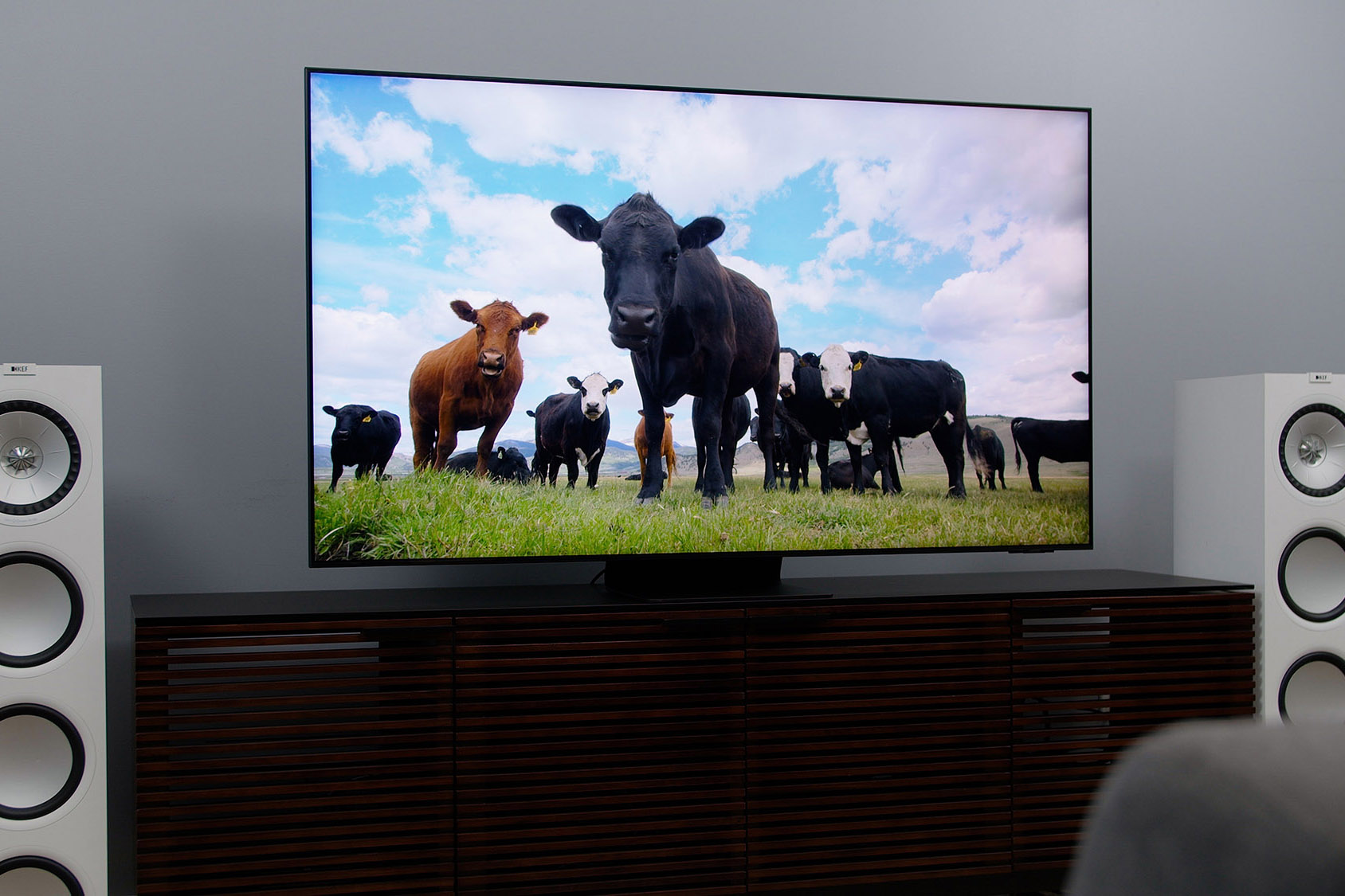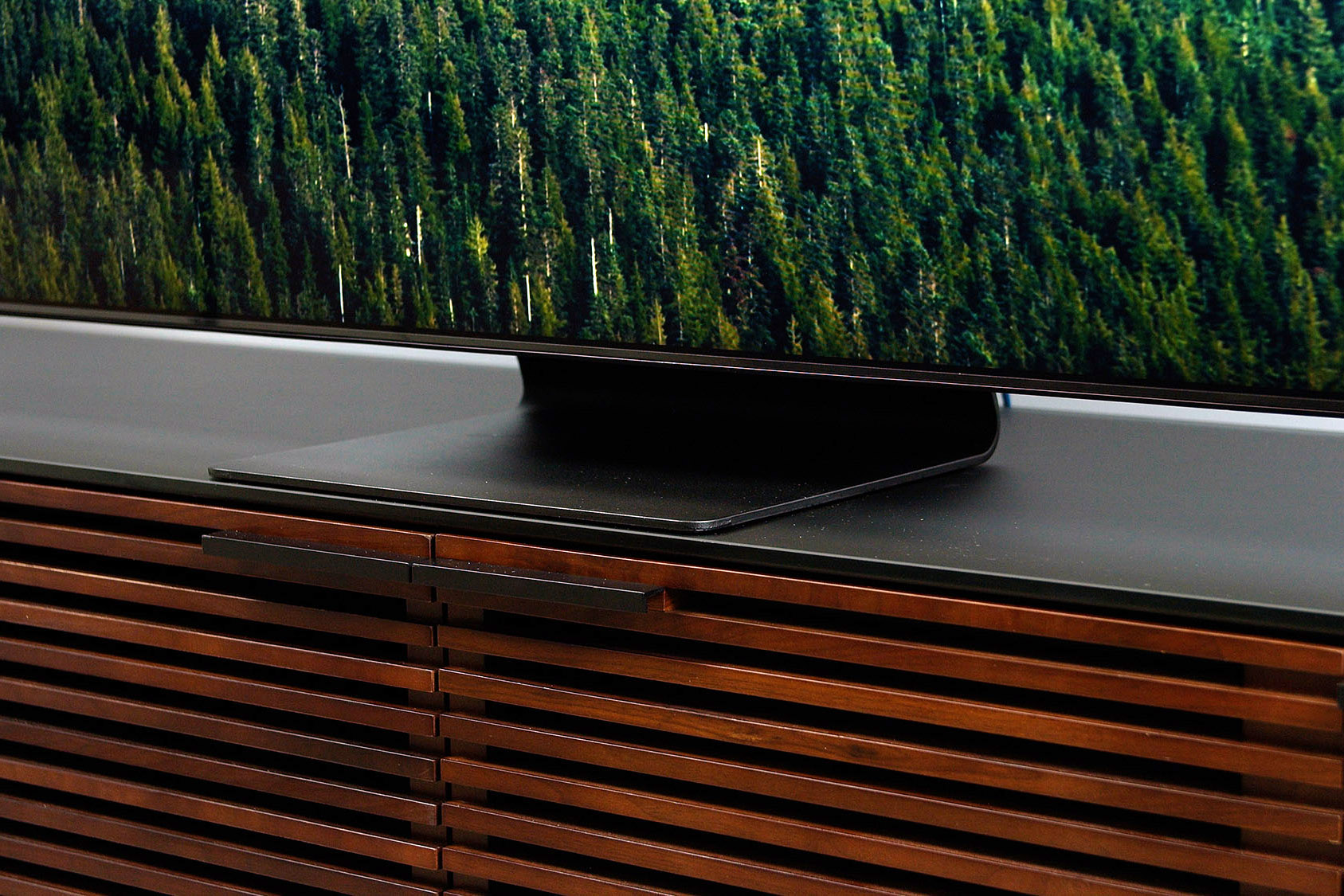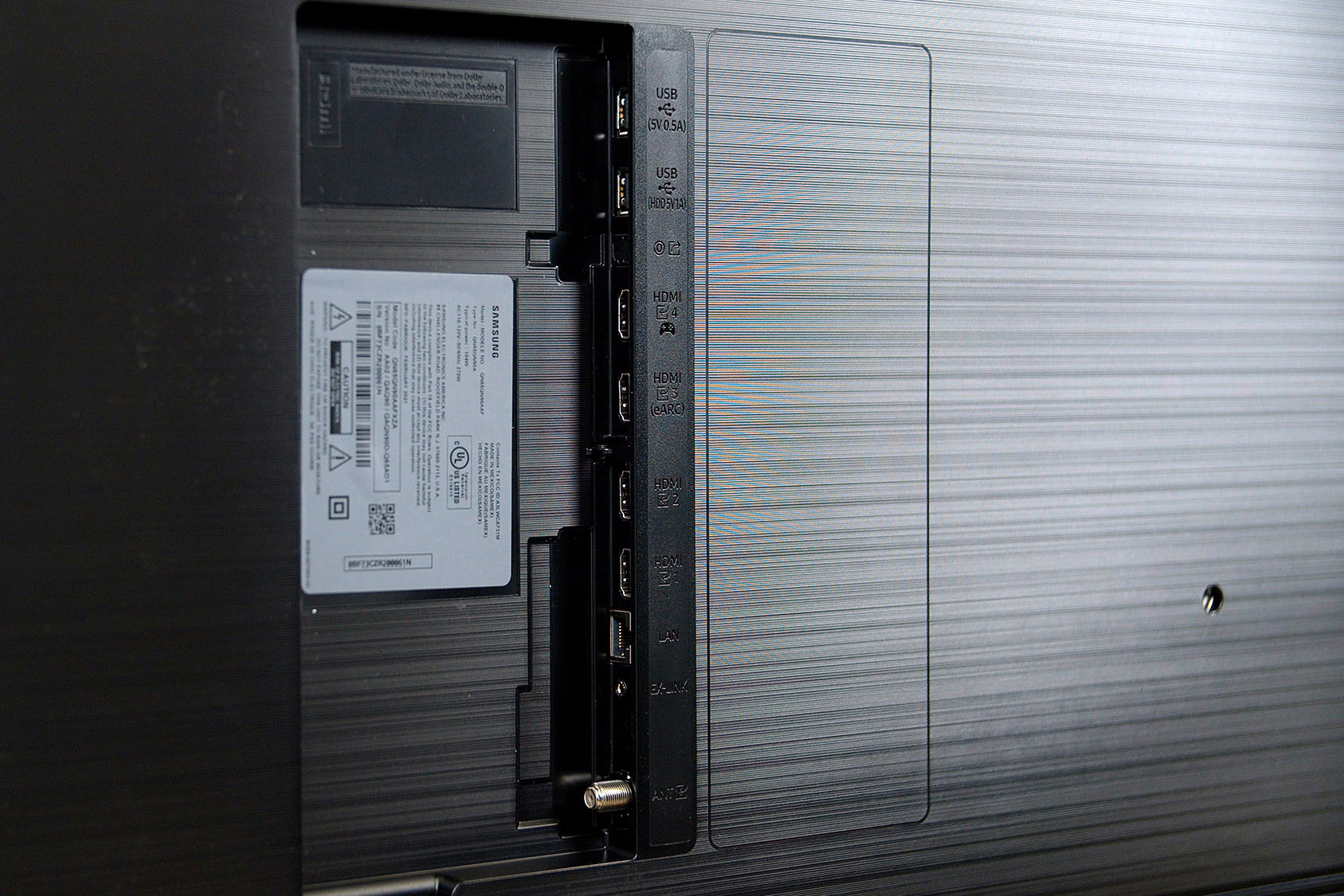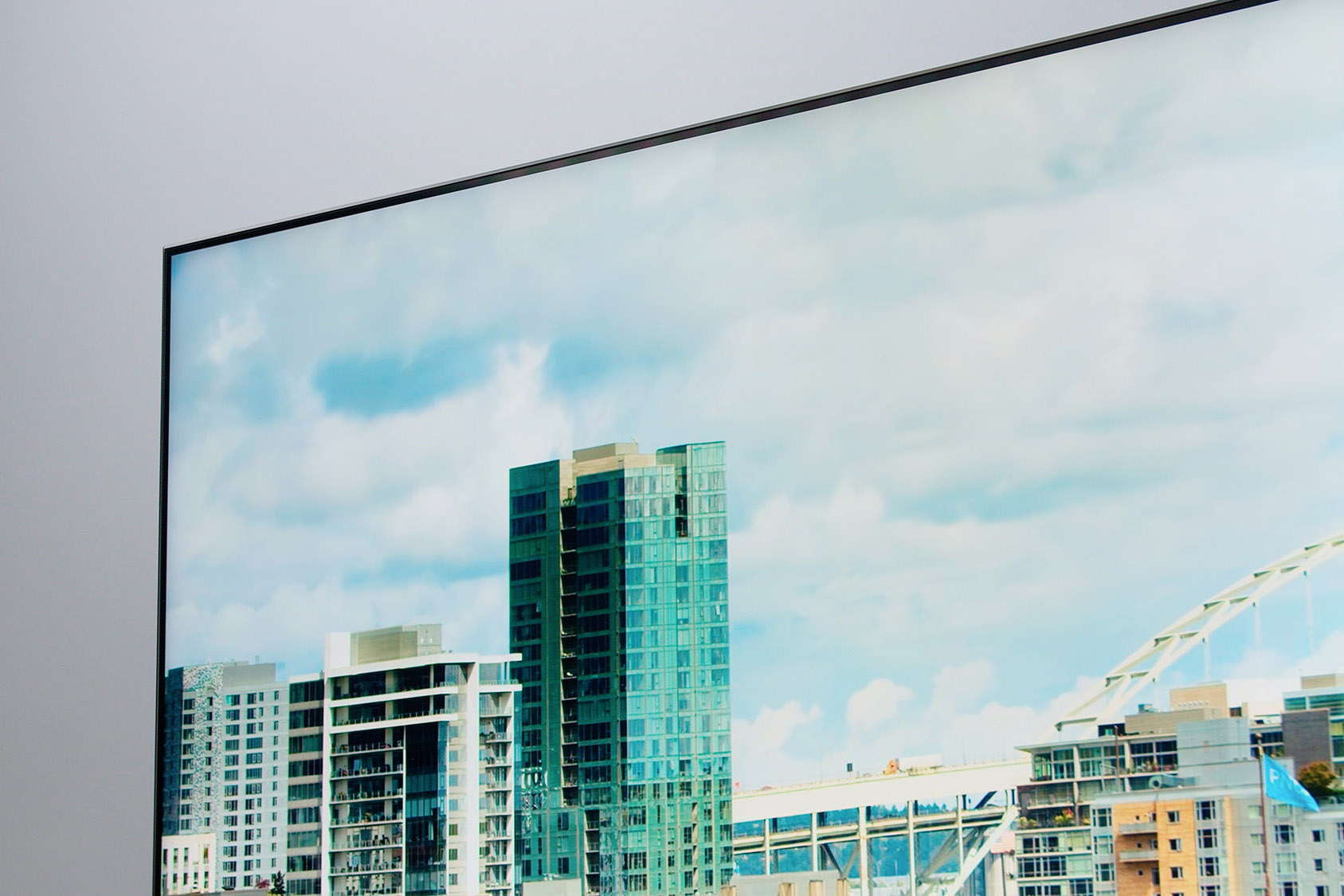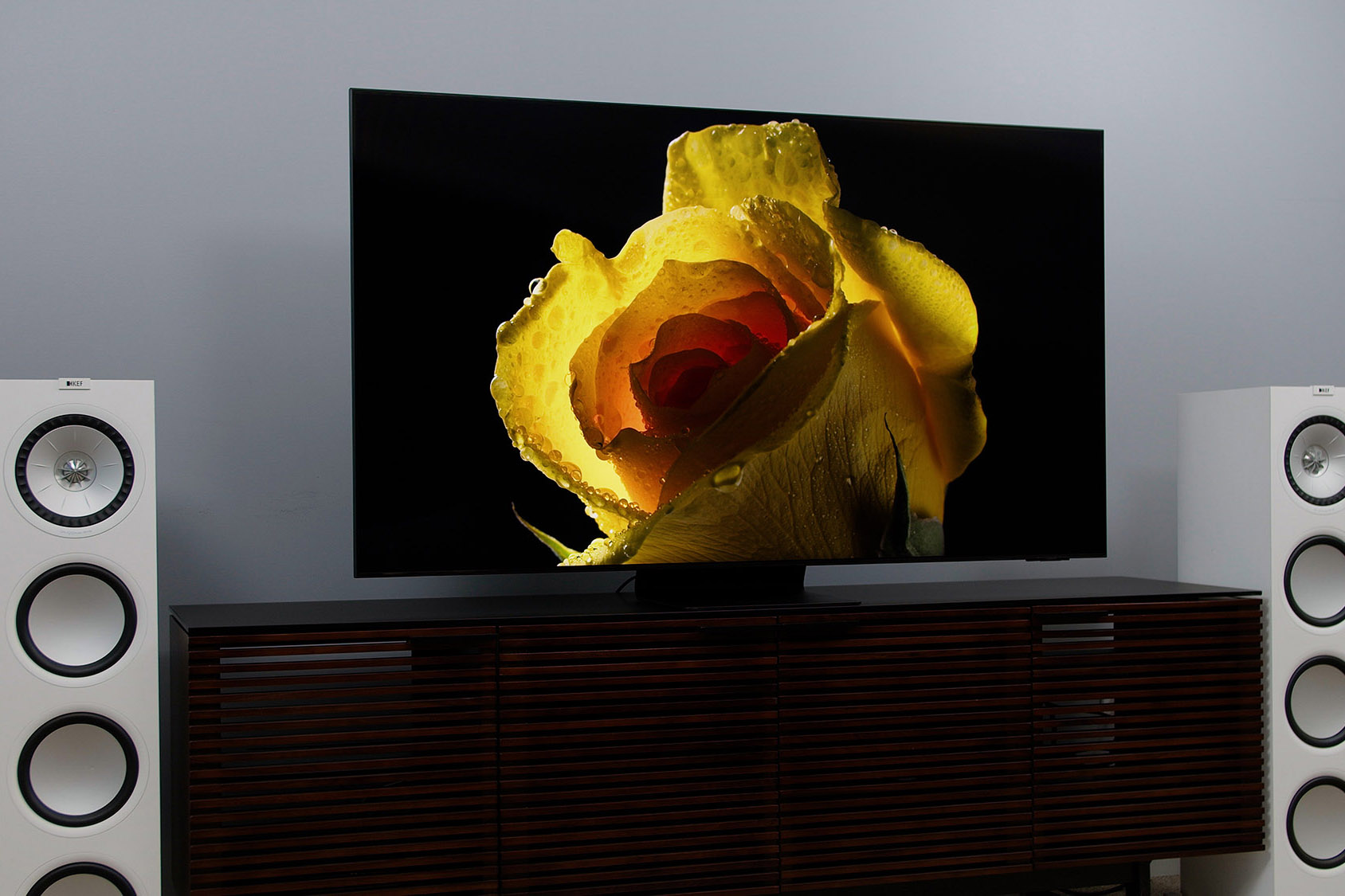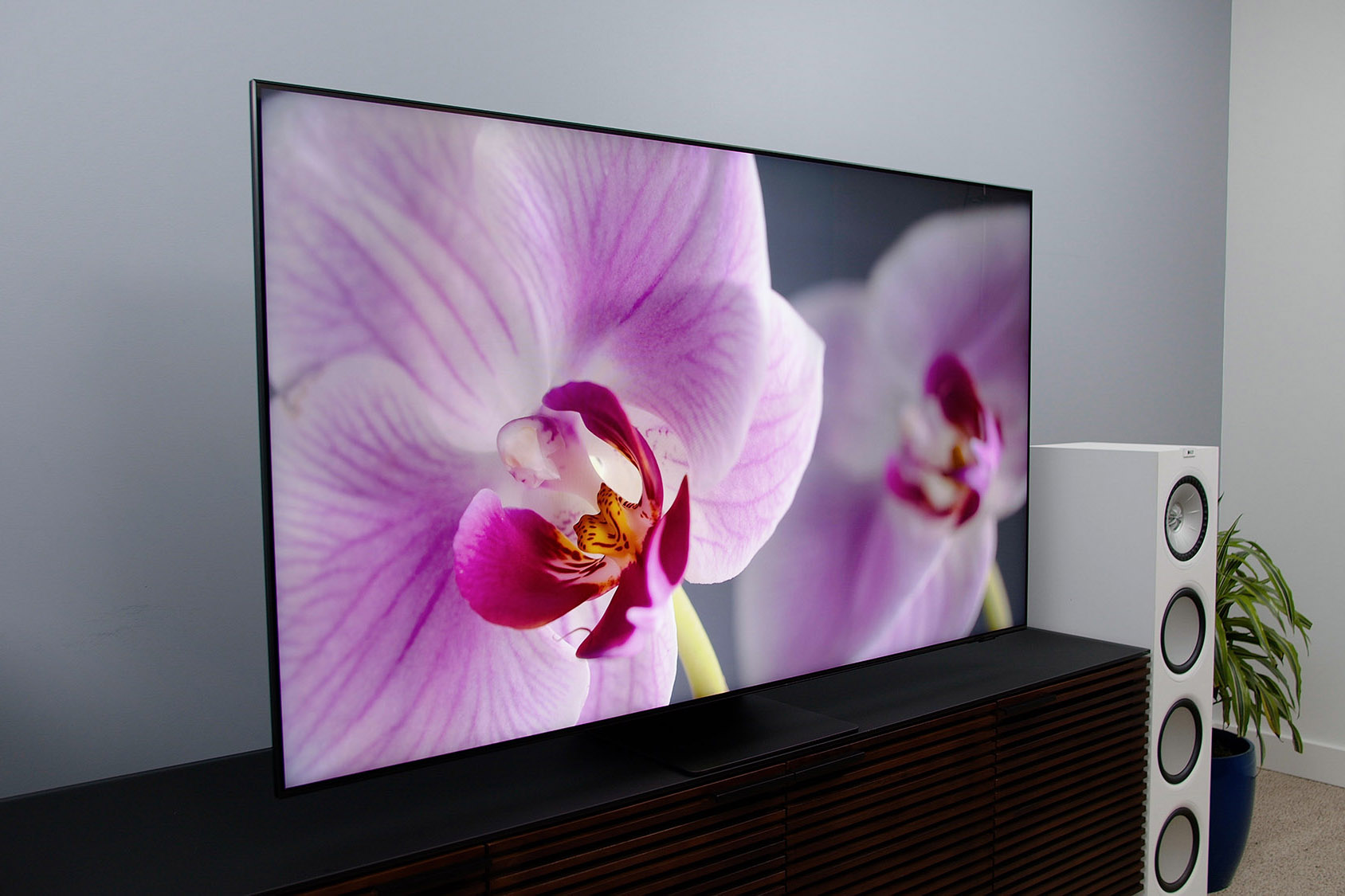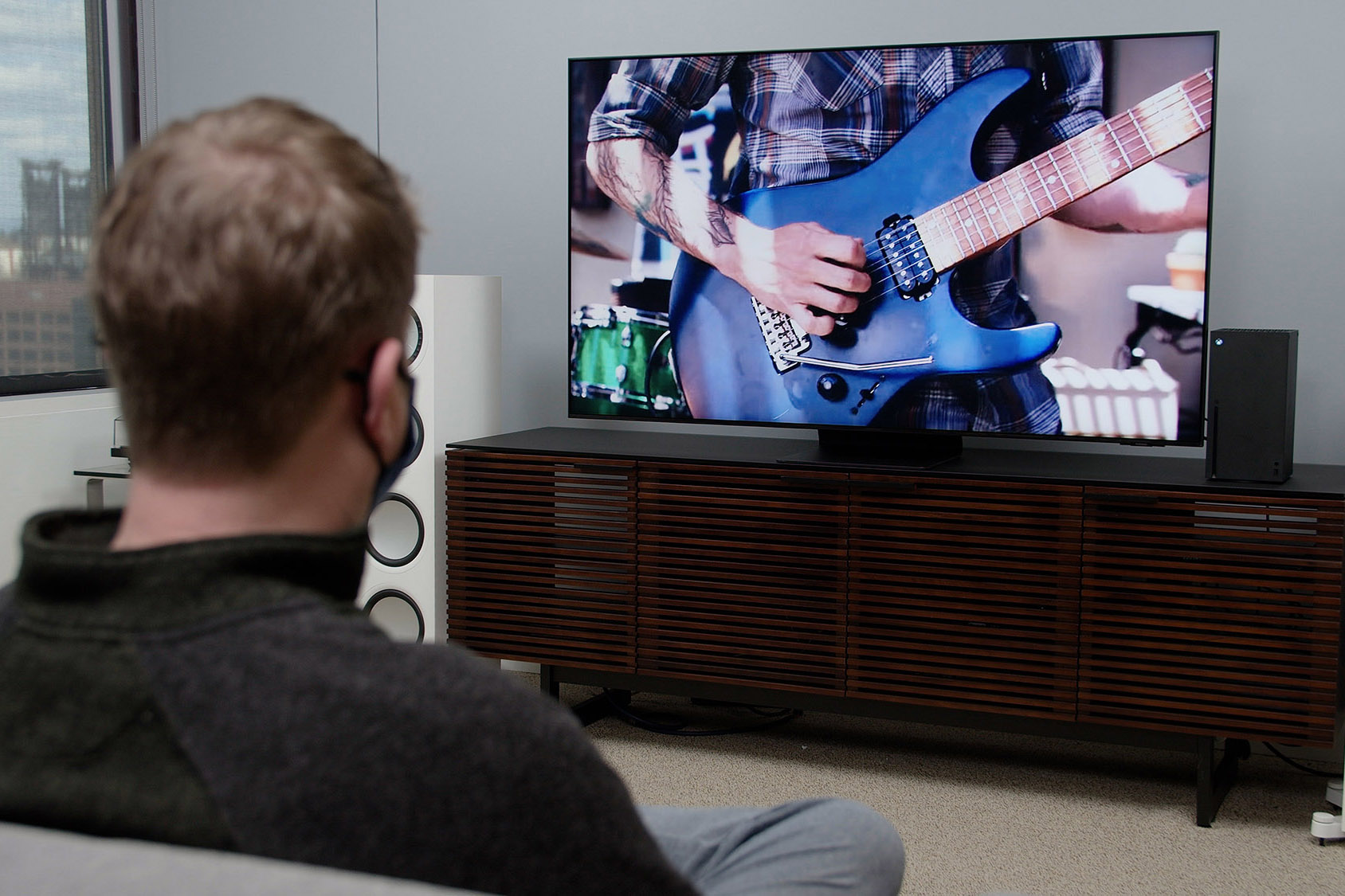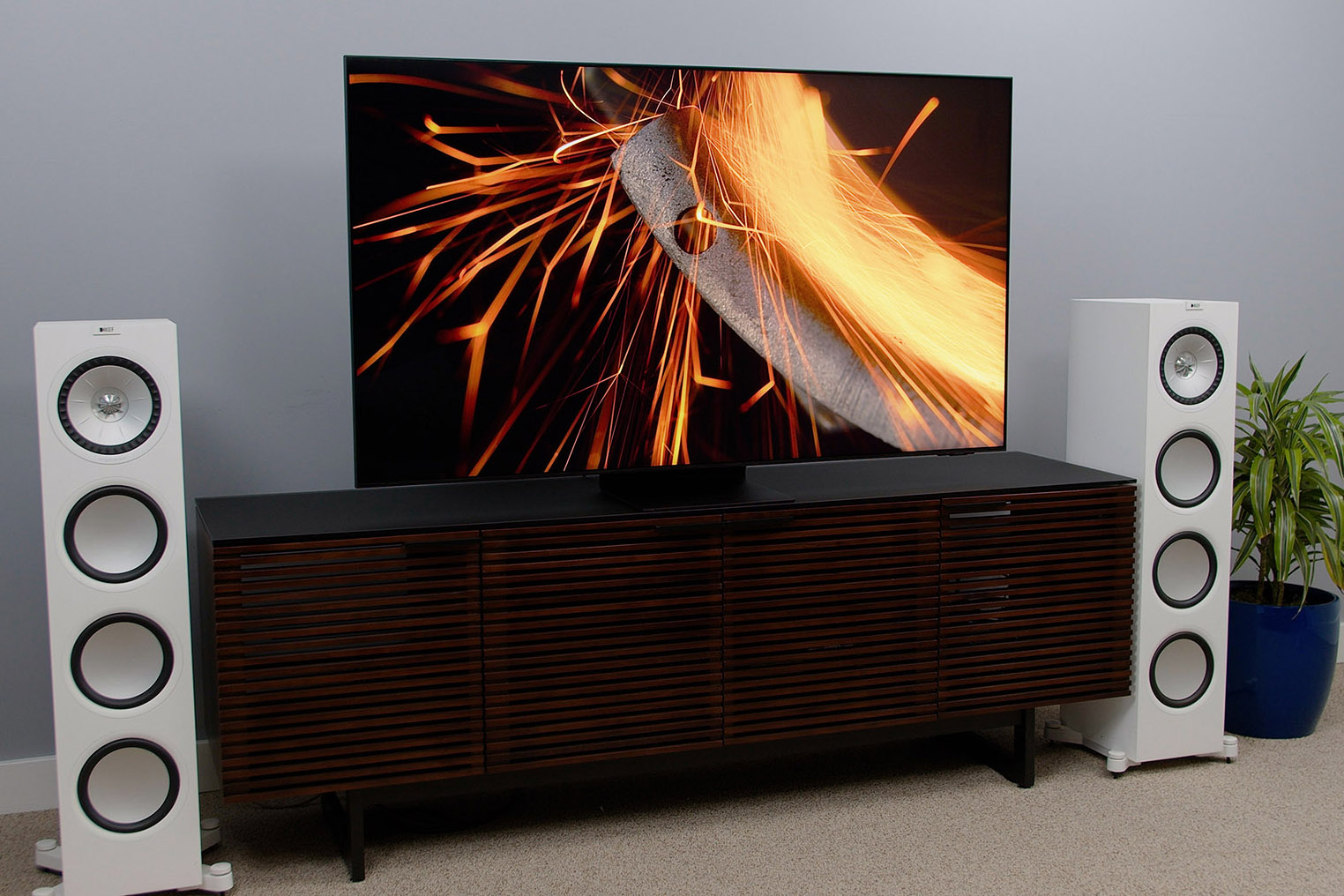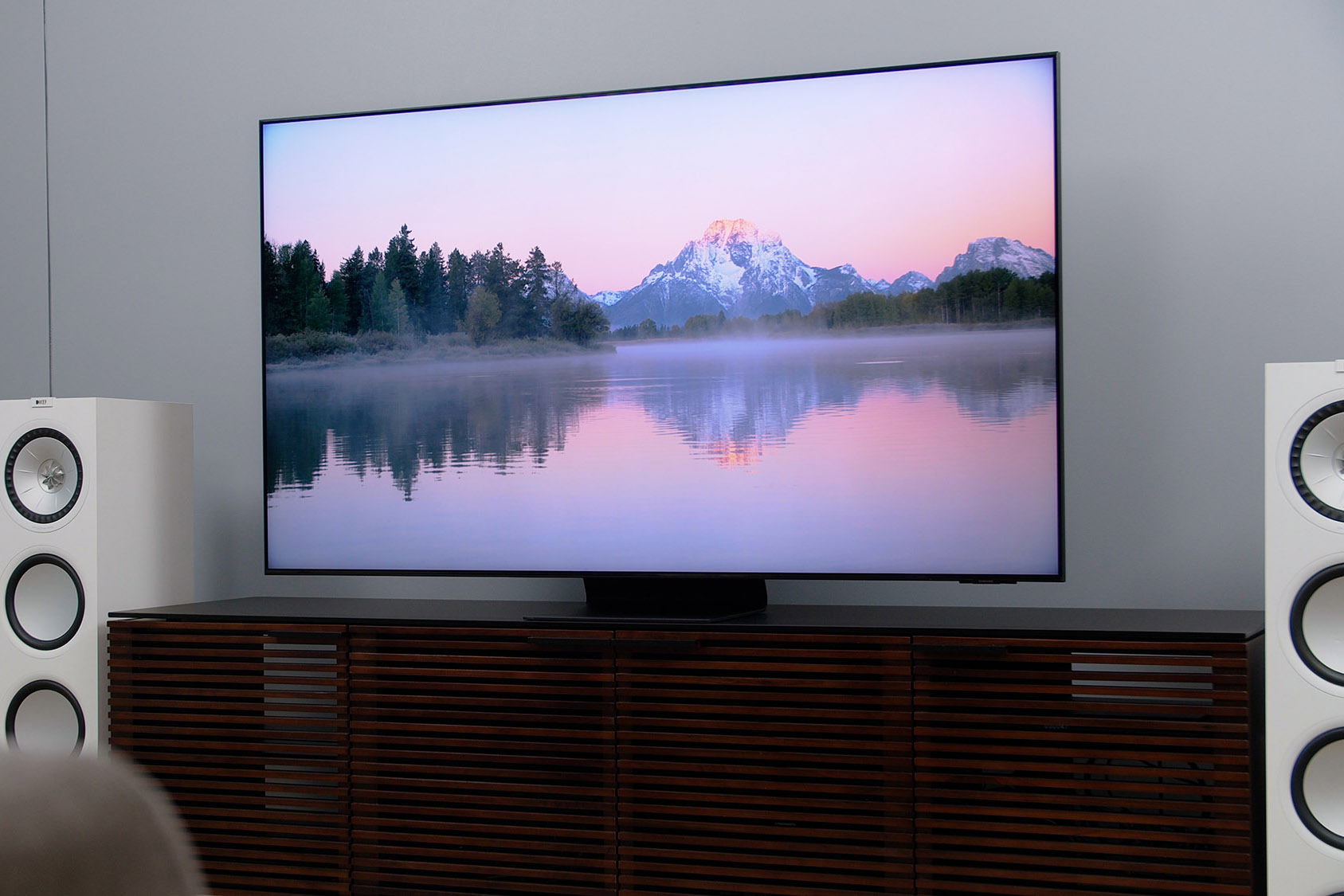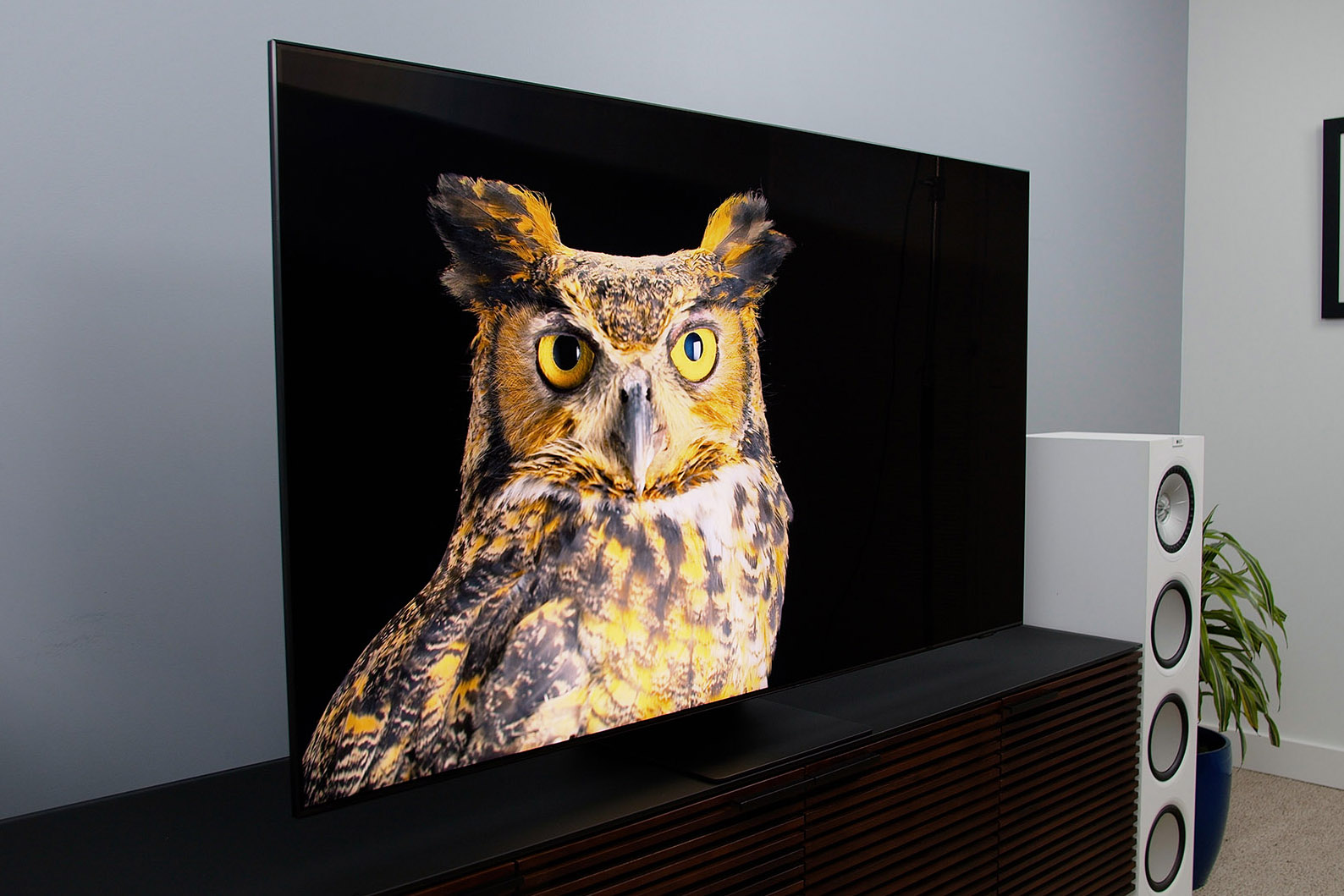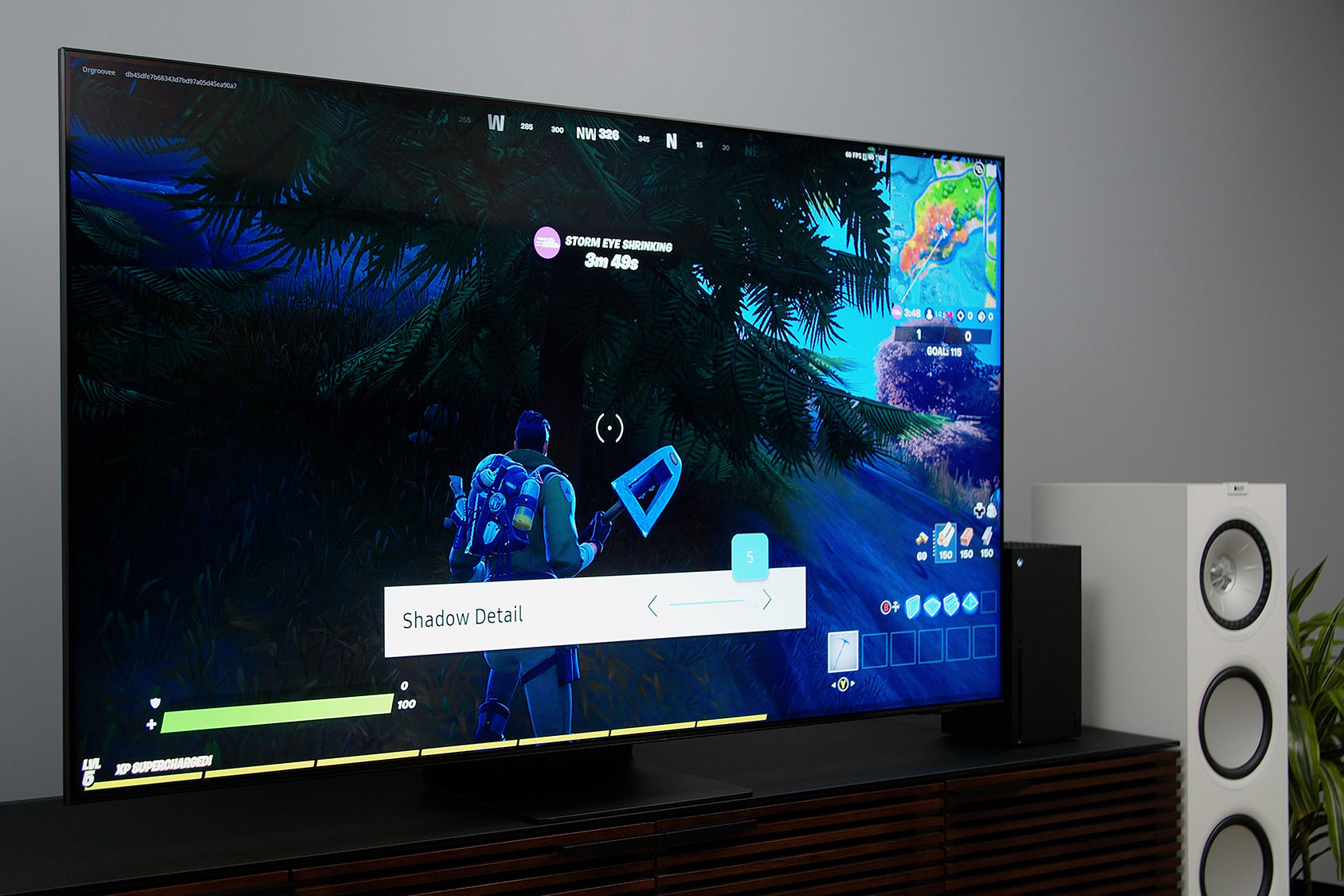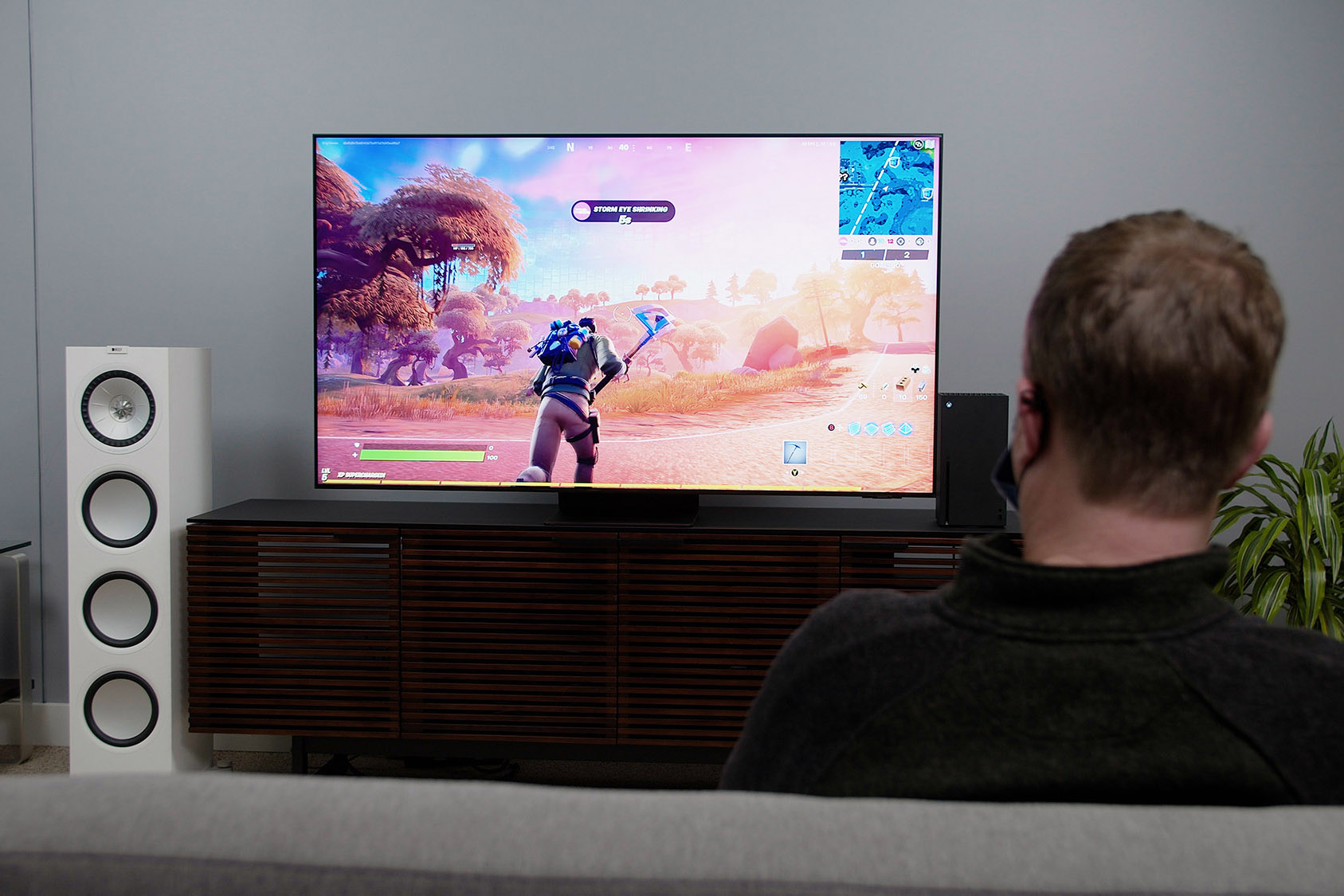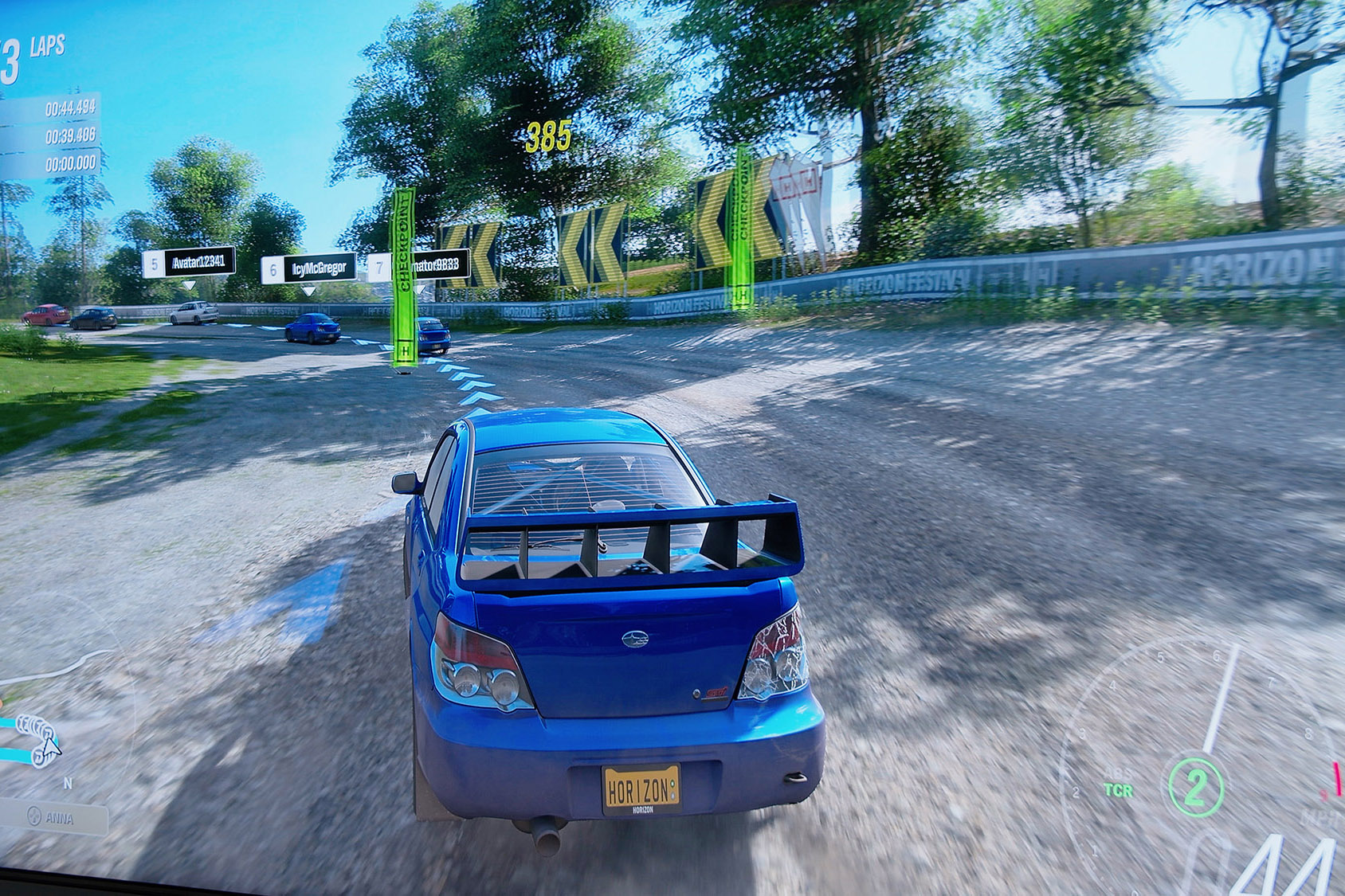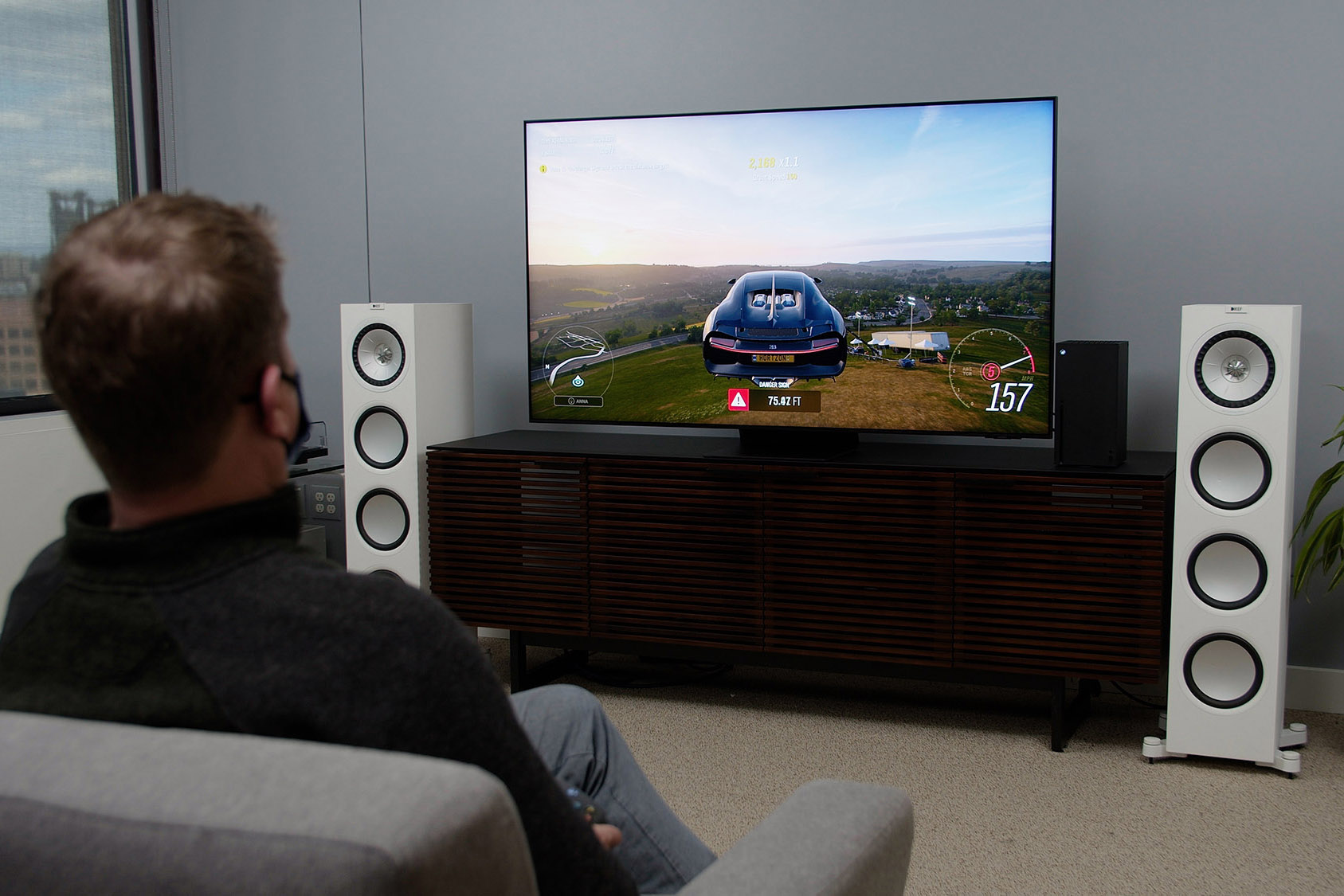- Impressive brightness
- Solid black levels
- Excellent overall contrast
- Brilliant color
- Great for gaming
- One HDMI 2.1 input
- Potential screen uniformity issues
If the chatter I’m seeing online is any indication, lots of folks have questions about Samsung’s Neo QLED TVs. Well, I’m pleased to say I have answers. AND some opinions to go with them. Let’s take a look at the QN65QN90A Neo QLED TV, a set armed with thousands of mini-LED backlights and nearly 800 zones of local dimming — that’s TV speak for “sounds pretty awesome.”
But does it look awesome? Let’s find out.
Out of the box
A quick correction to the video review (above): Samsung highly recommends you not use the stand assembly method as I did in the video — and I have to agree. I may prefer my method, but there’s a reason manufacturers create these instructions, and I would hate for anyone to have a bad experience because I decided to go rogue and toss the instructions to the wind. So, do as I say (now) and not as I do and we’ll all be right as rain.
Assembling the stand is a little precarious, no matter how you go about it. But on the positive side, I do like the stand’s look and feel. While the TV will flex on the stand a bit, it’s a secure arrangement, and because it is centralized, there’s less worry about having to have a media stand wide enough to support it.
Of course, if you’re wall mounting — and if you are, I do highly recommend Samsung’s own no-gap wall mount for the best look — the stand is a nonissue.
Everything else about the unboxing experience is great. There’s not a lot of fluff, only a bit of plastic to peel from the edges of the TV, and when you’re all done, you will be staring down a very attractive television, with nearly invisible bezels and a surprisingly thin profile.
Samsung QN90A Neo QLED 4K HDR details
While we reviewed the 65-inch QN65Q90A model, our review also applies to the other screen sizes available in the series.
| Screen Size | Model Number | MSRP |
| 55-inch |
QN55QN90AAFXZA
|
$1,800 |
| 65-inch | QN65QN90AAFXZA | $2,600 |
| 75-inch | QN75QN90AAFXZA | $3,500 |
| 85-inch | QN85QN90AAFXZA | $5,000 |
User experience
Spoiler alert: I have very few negative things to say about this TV, but one thing I’d like to see is for Samsung’s smart TV interface to get a makeover. That may not seem like a big deal when Chromecasts with Google TV and Roku sticks are so inexpensive these days, but if you are going to use the TV’s apps and such, I think we’d all benefit from a bit of an update to Tizen.

Fortunately, though, Samsung gets just about all the good apps, sometimes before others. Also, if you’re into using smart assistants, you’ve got your choice between the most popular options. We do like having choices.
While we’re talking about menus and such, I have to applaud Samsung for making this TV so easy to get set up and optimized. Choose your preferred SDR picture settings and make some HDR picture settings. These are global — across all the HDMI inputs and the apps — which is a huge headache reliever for all of us. So, yay.
What’s this Neo QLED about?
Now, let’s talk about this Neo QLED business. Neo is Samsung’s branding for its mini-LED backlit TVs. You can still get QLEDs with standard LED backlighting — those will be a little less expensive — or you can pony up some extra cash and get into a Neo QLED. For those unfamiliar, mini-LED backlighting means the TV has thousands of tiny LED lights instead of hundreds of larger ones. It also has a lot more zones of control — just under 800 on this set. In theory, this means the TV should be able to get brighter, especially in HDR highlights, while keeping blooming and halo effects at bay — that’s where you get a halo of light around a bright object on a black background, and has long the plague of LCD-based TVs.
I’m going to get into brightness, uniformity, and black level performance soon, but I first want to point out that the backlighting system seems a little bit slow. I noted that when a bright image goes up on the screen after having been in a darker scene, the TV is like, “oh, I need to get brighter,” and then it does. It takes maybe a second for the TV to catch up sometimes. Now, to be clear, this is something you don’t see much when watching most content — but I did see it in content at times before I started taking measurements and noticing it on color window test patterns. It’s not something to get riled up over, just a note that there may be some room for improvement.
Test results
Speaking of measurements, let’s nerd out a little bit. I tested the QN90A using Portrait Display’s Calman software, an X-Rite i1 Pro meter, and a SpectraCal C6 meter. Out of the box, in the SDR Movie mode with no adjustments to the brightness setting of 23, I got 275 nits, which is great for SDR in most cases. You can boost the brightness to a max of 50, and I measured 638 nits with my meter. Jumping to HDR, again in Movie mode, I got about 1,583 nits. In Standard mode, the TV blasted past that to just shy of 1,900 nits — 1867, to be exact.
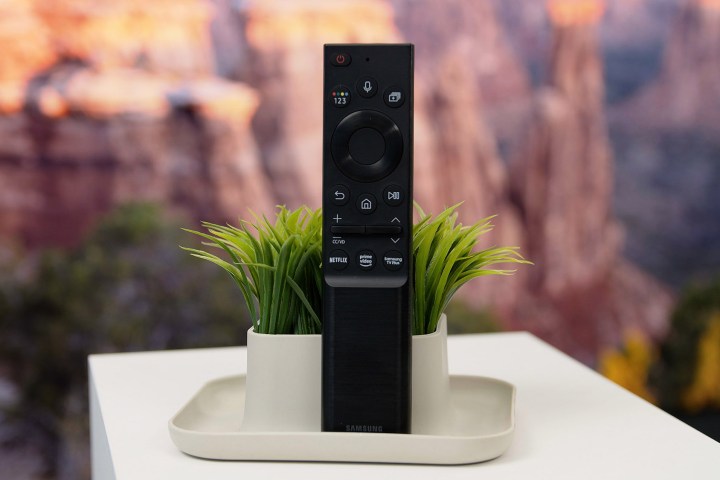
Now, I have seen some comments about those peak brightness numbers being disappointing and I’m going to have to respectfully disagree. More is not always better. Take the Hisense H9G, for example. Its peak HDR brightness in a similar Movie picture setting was just over 1200 nits, and yet, I found it was unwatchably bright sometimes, most likely due to processing. On the other hand, you have the Vizio P-Series Quantum X measuring a bit brighter, but frankly, I’d much rather watch this TV (I’ll provide details on why in a moment). My point is, I am fully satisfied with this TV’s HDR presentation, and part of that has to do with its black levels and backlight control. So let’s look at that.
Brightness, black levels, and contrast
I frequently use a test pattern that places white boxes in each corner of the TV’s screen on an otherwise black background, and I did so in this case. I started in SDR, and looking at the pattern with the naked eye, one would likely see a little bit of halo around the edges of the white boxes.

Boosting to HDR, the boxes get brighter and, once again, it would appear there is more halo effect, although much less than I have seen on previous TVs, including last year’s already excellent Samsung Q90T. However, over the years, I’ve learned that bright images on a black background when viewed in a dark room can play tricks on the eye.
The QN90A’s brightness and contrast are excellent.
In the video above, you’ll see that I cover up the white box just to its edges using a piece of cardboard, and when I do, the halo or blooming appears noticeably reduced. Why? It has to do with our vision. This is not the time for an anatomy lesson, but anecdotally, we have seen supposed blooming with this same pattern on an OLED TV, and yet, we know that possible. On an OLED, the black pixels are black. Totally turned off.
What I’m getting at is that sometimes what we perceive as blooming, when we are in a pitch-black room with a white box blaring into our eyes, isn’t really blooming. Don’t get me wrong, there IS blooming here, but it is less than I’ve seen in the past, and let me be clear here — the black uniformity on this TV is excellent.

The issue of shadow detail (often referred to as black crush) — or a lack of it — is always of concern, especially by gamers who need to see detail in the shadows to play competitive first-person shooters. So, I ran low-luminance and high-luminance starfield patterns and noted the QN90A came out of black very well. For those who want to intentionally raise blacks for games, Samsung provides a settings adjustment for just such a thing.
To sum it up: The QN90A’s brightness and contrast are excellent.
Color

Out of the box, in the Movie preset, my measurements indicated that red was a little too forward, so I backed that down a bit in the two-point white balance menu, and — bam — this TV’s color blend snapped into extremely impressive territory. In HDR, the TV sometimes overshoots or undershoots some colors, so again, it isn’t perfection, but the color on this TV is scary good.
Out of the sweet spot
One of the pitfalls of using a VA-type LCD panel is that off-axis, blooming, and color shift issues become very obvious. I think one of the things I’m most impressed with on the QN90A is its off-axis viewing experience. You do see blooming more from the extreme sides, but even less than last year’s Q90T, which, again, was already well ahead of the pack. There’s also very little color shift — overall, it’s one of the best off-angle TVs we’ve tested here. That means a better seat in the house for everyone.
The antiglare is excellent as well. If you do have a lot of light coming in the room, and you’re watching a dark scene, you may see some rainbow effect, but I’d argue that’s better than looking into a black mirror.
Real-world picture quality
Enough with the nerd stuff. How does this TV look when you are watching regular content in either SDR or HDR? It’s really freakin’ good. This is a demonstrably better TV than the Q90T that came before it, and that was already a pretty great TV — I know, I’m repeating myself.
This TV has a very quick response time, which is great news for gamers, but for movie buffs.
Images are lush and vibrant, colors and HDR highlights pop, and the superior black levels give a sense of depth you don’t usually get with an LCD-based TV. I did notice a little bit of screen uniformity problems with large swaths of bright colors, but overall, there was very little dirt-screen effect.
As for motion handling, it’s a mixed bag. This TV automatically removes all judder from 24p movie content — there isn’t even a setting you can access to turn this off, which I think for most folks is going to be just fine.
Stutter, though. That’s a different story. This TV has a very quick response time, which is great news for gamers, but for movie buffs — just as it is in OLED — you can get stutter effects. The only way to counter this is with motion smoothing, which will bring in some soap opera effect, which most people apparently hate far less than I, so perhaps it’s not a big deal. Movie buffs will probably want to go with the lowest setting they can tolerate, though.
Sound quality
The QN90A’s sound quality is above average. There’s not a lot of bass — that’s typical — but overall, it’s balanced and tolerable, whereas many TVs I test make me cringe. It is a little odd that you have to crank the volume number fairly high to get normal in-room volume, but I suppose that means more granular control of the volume levels.
I will say Samsung’s object-tracking sound is fairly effective as well, though not on the level of a Sony OLED, where the screen is the speaker. Samsung’s soundbars would be a good match with the TV, and Samsung’s symphony sound — where the TV’s speakers work with the soundbar — is especially impressive.
Gaming
This TV is a stellar choice for gaming in that it has remarkably low input lag — under 10 milliseconds in game mode for all resolutions at 60Hz and under 6 milliseconds for all resolutions at 120Hz. The TV also supports Freesync, but no G-Sync I’m afraid. I’m not really sure that’s a huge loss for most people because the variable refresh rate is there regardless.
At any rate, HDR gaming is gorgeous on this TV as well, with very little crushing of the blacks, and if you are playing a really dark game, you can raise the blacks a little for slightly better shadow detail. I didn’t really need it playing in a dark room, though. The TV comes out of black fairly well and retains most shadow details. It’s the bright highlights that really have me sold, though. Games pop on this TV.
On the downside, the TV only has one HDMI 2.1 input. So, if you own both the Xbox Series X and the PlayStation 5, you’ll need to swap them out by hand or go for a full-on HDMI 2.1 A/V receiver to switch between them. Add a gaming PC to that mix — and it’s more of the same.
My take
With just one HDMI 2.1 input, no Dolby Vision, and a smart TV interface that could use a face-lift, the Samsung QN90A is not a perfect TV. But by the most meaningful measures, it is truly outstanding. Putting all the numbers aside, I like to do a simple gut check — I watch a lot of TVs, and some of them are a letdown, some are just fine, some are great, and some are real knockouts. I’ve got to put the Samsung QN90A in that last category. I simply love watching it.
Is there a better alternative?
At this point, I have not reviewed a better LCD-based TV than the QN90A. I am excited to see how Sony’s X95J looks this year, and LG’s top-tier TV also looks promising, but it’s hard to imagine either topping the QN90A by any significant margin. Another alternative could include the brighter LG G1 OLED, though it carries quite a premium price.
Check out our best televisions of 2021 for more options.
How long will it last?
Though the QN90A offers just one HDMI 2.1 input, it does support the latest and greatest connectivity and the latest backlight technology. It should last owners for many years to come.
Warranty
Samsung offers a one-year parts and labor warranty
Should you buy it?
Yes. The QN90A is a remarkable TV with excellent picture quality.


